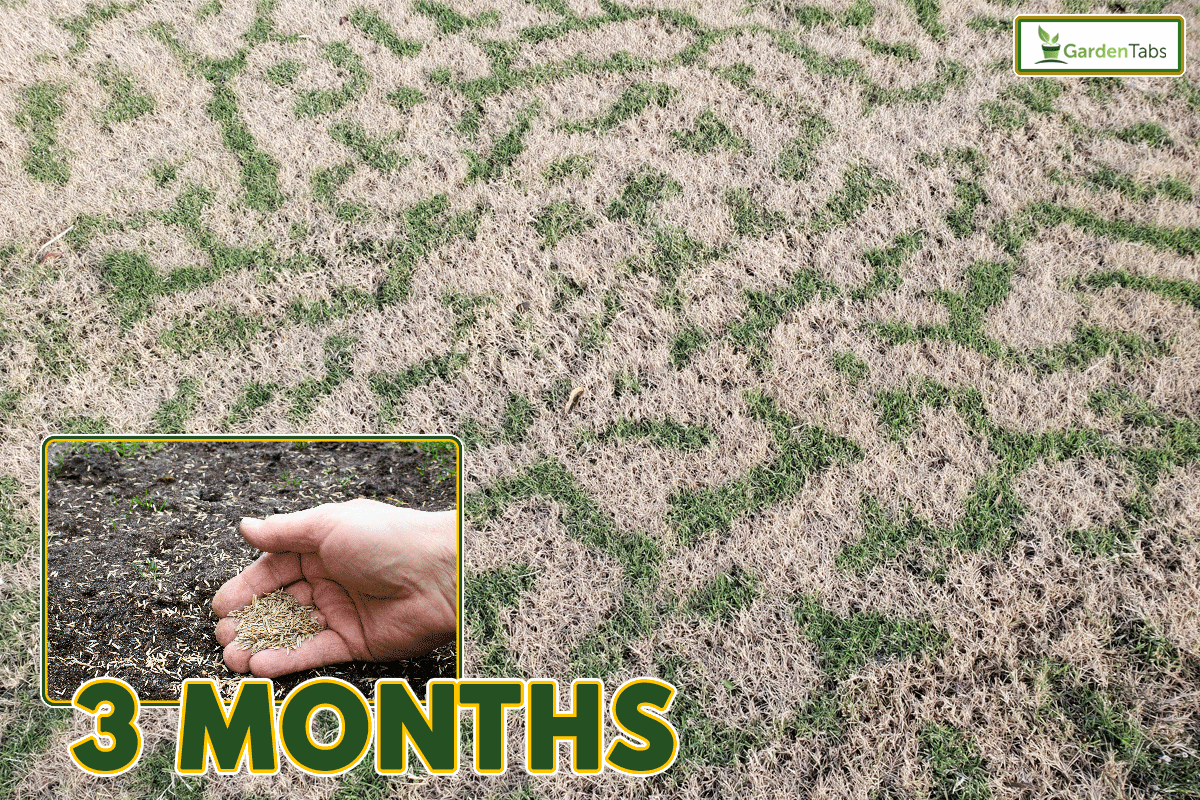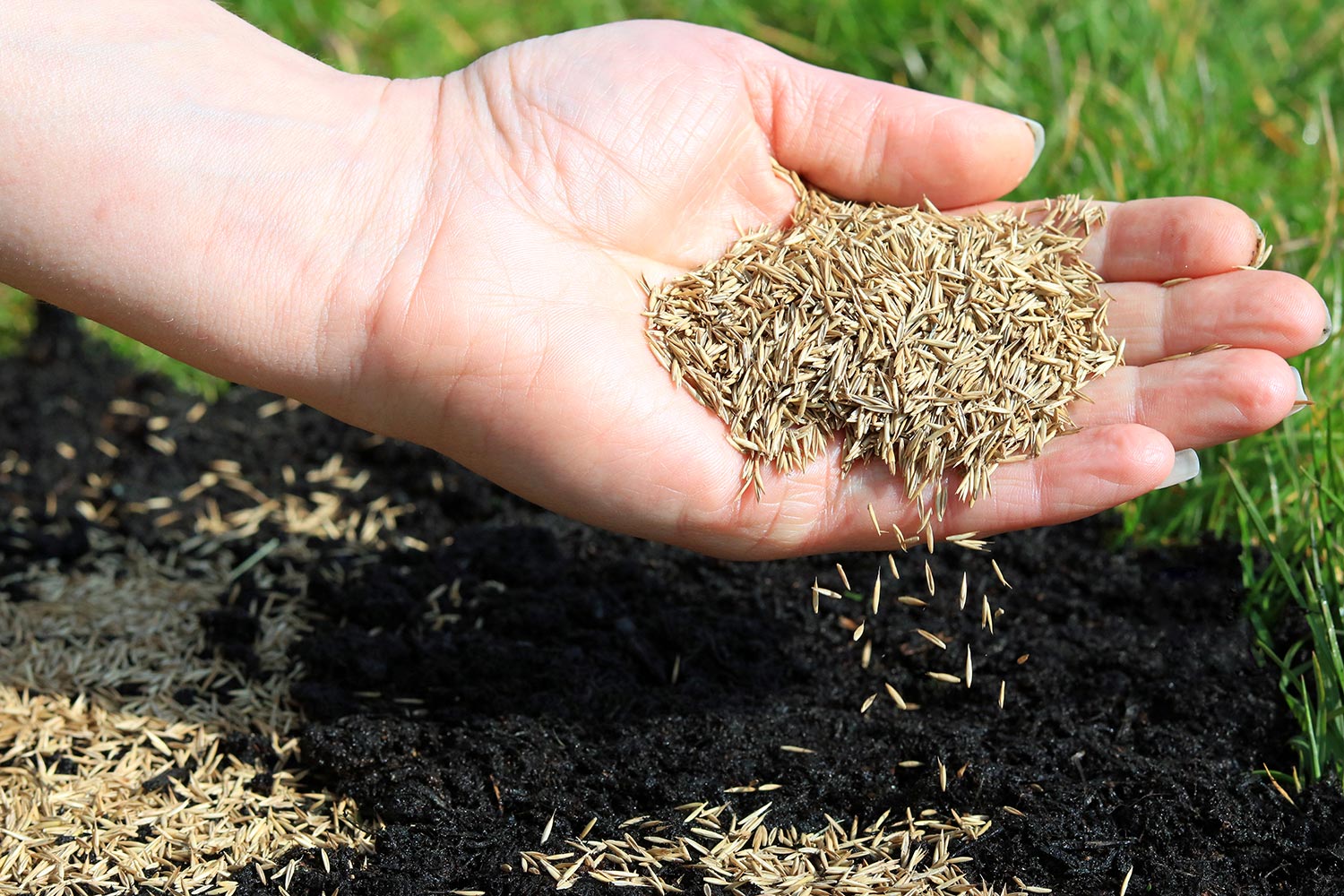During the winter, the landscape is often bare and barren; the grass is effectively gone for the year. By this time, dormant seeding is a popular way to propagate grass growth for early spring. We've looked into this topic and in this post, we will talk about how long these grass seeds can stay dormant and the benefits of seeding your lawn using this method.
Grass seeds stay dormant and survive the winter, which is about three months. During this time, the dormant seeding method is done to help thicken and repair balding patches in the lawn.
This seeding happens during the colder months when the temperatures drop lower than 50°F consistently, and the grass seeds lay dormant until it germinates when the soil warms up.
We know that dormant seeding might be a fairly new method for some of you. Fortunately, we've collected all the information you need to know about dormant seeding. Keep scrolling as we also talk about the best kinds of grass you can seed during this time, as well as questions on how long you can store your grass seeds for planting.

How Long Can Grass Seed Stay Dormant
Plant seeds are known to be viable for a very long time, at least until they are planted on the ground to get water and nutrients. One of the hardy seeds that last for a very long time is grass, as most of them are used plentifully to repair and patch worn and balding lawns.
Most grass seeds for the lawn are planted during the spring when the soil is warm, and the seed germinates quickly thanks to these fair conditions. However, many gardeners and professionals also follow a method to seed during the winter, which is what they call dormant seeding.
Dormant seeding is the method in which the lawns are overseeded during the late fall and winter, wherein the temperatures are too cold for the soil to allow the grass seeds to germinate. During this time, the grass seeds are dormant for about 3 months or so, maybe even longer if the temperatures have dropped below 50°F during the late fall.
Why Should I Dormant Seed?
Dormant seeding is not a new method, and researchers have found out that there are quite a number of benefits to seeding your lawns with this method. While there are obviously disadvantages to dormant seeding, a lot of gardening professionals see how much the benefits outweigh these disadvantages.

Less watering
Just like any plant that needs to germinate, grass seeds also need watering in order for them to grow. When repairing or patching bald patches in the lawn, watering is one of the most tedious parts of seeding. With dormant seeding, the grass seeds make better contact with the moist soil as the snow melts.
With this method, you will have to water the soil less and simply wait for the early spring rains to help water the lawn. Of course, dry spells and unfavorable weather conditions might require you to water the seeded lawns for a bit, but this is still a lot less watering than a normal seeding cycle.
Better Soil Contact
During the winter, the soil cracks naturally as the frost opens it up. With dormant seeding, the grass seeds find themselves in better contact with the moist soil because it has time to make its way toward the ground. As the soil moistens with the thawing snow, the seeds get buried deeper and create better contact to help them grow.
Make the Most Out of Early Spring
A lot of things happen quickly during the spring. With your seeds already pre-laid out on the ground even before the soil warms up, you essentially jumped ahead of spring's timeline. Dormant seeding makes the most out of early spring because the conditions during this time allow your seeds to germinate without waiting for them to find favorable conditions.
Better Growth in Shady Areas
Dormant seeding works best for shady areas because the seeds are already established on the ground as it waits for spring to come. Germination requires light, and since tree foliage takes some time to grow during early spring, the seeds get all the light they need to grow before all the leaves fully come back.
Healthier Lawns
According to researchers and professionals, dormant seeding creates healthier lawns over spring seeded ones. This is because the grass seeds have had more time to establish themselves on the ground and are pretty mature once the harsh heat of the summer arrives.
What Is The Best Grass Seed For Dormant Seeding?

The best seed to use for dormant seeding is cool-season grasses such as bluegrass, turf-type tall fescue, and perennial ryegrass.
Get this Kentucky bluegrass seed mix on Amazon.
If you'd like to have better chances, you can use a mixture of two or three of these grass seeds for dormant seeding. Nature and the weather conditions in your area will determine which grass seed will prevail in your yard.
Check out this perennial ryegrass seed mix on Amazon.
How To Dormant Seed Grass
Dormant seeding is a pretty easy process in which you simply scatter the seeds all around the lawn during late fall or early winter. However, there are tips and tricks that can help your seeds get better contact with the soil to help them get the best chances to germinate during springtime.
Mow Your Lawn

This will most likely be your last mow for the season, so do make it count. Mow your lawn slightly lower than your usual height, about two inches from the ground. This will allow your dormant seeds to make contact with the soil instead of sitting on top of the grass blades.
Loosen the Soil Surface
Using a hand rake or a dethatcher, loosen the soil surface to allow the seeds to burrow themselves into the ground for germination. During this time, make use of the rakes to remove all dead leaves and dried-out grass parts that might hinder the seeds from reaching the soil.

Check out this dethatcher from Amazon.
After loosening the soil, spread a generous amount of grass seeds on the lawn manually, or make your life easier by using a spreader. It's okay if you overseed the lawn as some of these seeds may not germinate completely, and only the strong ones will manage to take root on the ground.
Get this seed spreader on Amazon.
Water Thoroughly

Water the area quite well, but don't drown it with too much water. The cooler temperatures and the coming frost and snow will most likely moisten the ground without having to water it all the time. Make sure that the soil isn't saturated and soggy as this condition will kill your grass seeds.
How Long Is Grass Seed Viable?
Like many people, you probably have a bag of grass seeds stocked in your garage or shed for patching bare areas of the lawn. While seeds generally last for a very long time, certain conditions in these areas can lower the germination viability of your grass seeds.
Depending on the species of your grass seeds, an internal seed moisture level of about 10 to 20% is needed for them to survive and germinate properly. Seeds that are stored in conditions that lower this moisture or go over this level tend to die. Humid conditions in certain areas cause improperly stored seeds to absorb too much moisture, and they don't germinate well.
Seed storage temperatures are at their best when it is above freezing but under 60°F. Storing the seeds in conditions over 100°F will surely render the seeds unplantable.
The best way to store grass seeds is in a tightly sealed plastic bag or container where they won't absorb excess moisture. They are best stored indoors, and if the space allows, refrigerating the grass seeds may lengthen their viability. If your grass seeds have been stored in very good conditions, you can expect them to last for up to five years.
Final Thoughts
Grass seeds are tough and hardy, and planting them out on the lawn during the wintertime gives them enough time to go deep into the ground and take root. If you'd like to get a headstart on your lawn for the early spring, try out dormant seeding and give your grass seeds a chance to produce a healthier, thicker lawn.
Are you learning about taking care of grass in your garden? We have some articles that might interest you:




